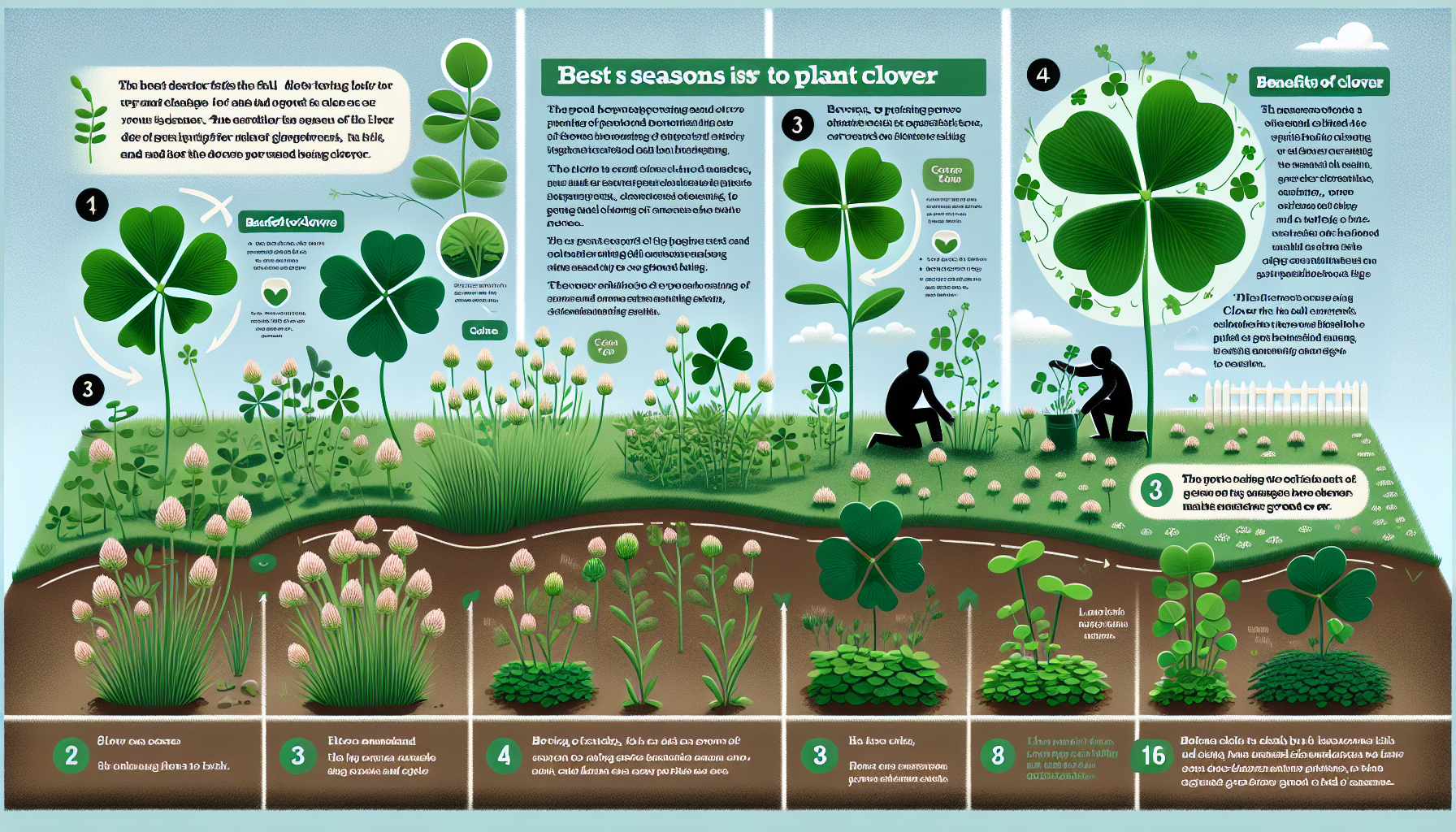
when to plant clover
When to Plant Clover: A Seasonal Guide for Best Results
Clover is a versatile plant that offers numerous benefits, from improving soil health to serving as a low-maintenance ground cover. Whether you're planting clover for erosion control, as a cover crop, or to enhance your garden's aesthetics, timing plays a crucial role in its success. In this guide, we’ll explore the best seasons to plant clover and tips to ensure it grows lush and healthy.
Why Choose Clover for Your Garden?
Clover is an excellent choice for gardeners looking to improve soil fertility naturally. It’s a nitrogen-fixing plant, which means it converts atmospheric nitrogen into a form that enriches the soil. Clover also requires minimal maintenance, tolerates various soil conditions, and provides a habitat for pollinators like bees. Its adaptability makes it suitable for lawns, pastures, and even flower beds.
Best Seasons to Plant Clover
The ideal time to plant clover depends on your climate and soil conditions. Here’s a breakdown of the best seasons for planting:
Spring Planting
Spring is one of the most popular times to plant clover. As the soil begins to warm and frost risks decrease, clover seeds can germinate effectively. Aim to plant clover after the last frost in your area, typically around late March to early May. Spring planting allows clover to establish itself before the heat of summer.
Fall Planting
Fall is another excellent time for planting clover, especially in regions with mild winters. Sow the seeds in early fall, around late August to early October, to give the clover time to establish before the first frost. Fall planting is particularly beneficial for cover crops, as clover helps protect the soil during the winter months.
Avoid Planting in Summer
While clover is hardy, planting it during the peak of summer can be challenging due to high temperatures and potential drought conditions. If you must plant in summer, ensure the soil is well-irrigated and shaded to prevent stress on the young plants.
Tips for Planting Clover
- Prepare the Soil: Clover thrives in well-drained soil with a pH between 6.0 and 7.0. Test your soil and amend it if necessary before planting.
- Choose the Right Variety: There are several types of clover, including red clover, white clover, and crimson clover. Select the variety that best suits your needs and local climate.
- Broadcast Seeds Evenly: Scatter the seeds evenly across the planting area to ensure uniform coverage. Lightly rake the soil to cover the seeds.
- Water Consistently: Keep the soil moist during the germination phase. Once established, clover is relatively drought-tolerant.
- Consider Companion Planting: Clover pairs well with other plants, such as grasses or legumes, to create a diverse and healthy ecosystem.
Where to Learn More
Ready to dive deeper into clover planting? Check out resources like Gardening Know How or Farmers' Almanac for additional tips and tricks.
Conclusion
Planting clover at the right time ensures a thriving garden or pasture. Spring and fall are your best bets for optimal growth, while proper soil preparation and care will maximize its benefits. Whether you're a seasoned gardener or a beginner, clover is a rewarding plant to grow. So why not give it a try and enjoy its beauty and functionality?